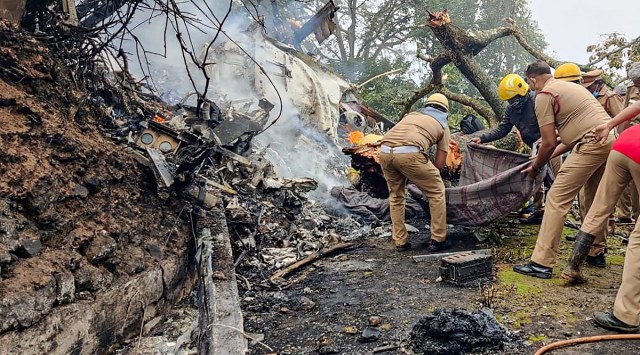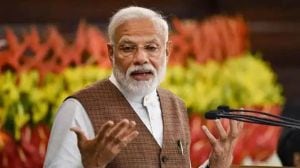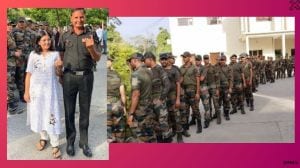- India
- International
Probe into CDS chopper crash blames weather, says no sabotage
🔴The helicopter was descending to land when it ran into sudden clouds which resulted in pilot disorientation.
 Rescue officals at the spot where an IAF Mi-17V5 helicopter crashed in Coonoor, Tamil Nadu. CDS Gen Bipin Rawat, his staff and some family members were in the chopper. (PTI)
Rescue officals at the spot where an IAF Mi-17V5 helicopter crashed in Coonoor, Tamil Nadu. CDS Gen Bipin Rawat, his staff and some family members were in the chopper. (PTI)A tri-services Court of Inquiry into the December 8 helicopter crash which killed Chief of Defence Staff General Bipin Rawat has attributed the crash to unexpected change in weather, resulting in pilot disorientation and the helicopter hitting a surface.
This is the main preliminary finding of the CoI which ruled out mechanical failure, sabotage and negligence.
The CoI was instituted to probe the crash near Coonoor in Tamil Nadu that claimed the lives of General Rawat, the country’s first CDS, his wife Madhulika and 12 armed forces personnel.
On January 5, IAF chief Air Chief Marshal V K Chaudhari, along with Air Marshal Manvendra Singh, the head of the probe committee, had briefed Defence Minister Rajnath Singh on the findings.
On Friday, the IAF said: “The Court of Inquiry has ruled out mechanical failure, sabotage or negligence as a cause of the accident. The accident was a result of entry into clouds due to unexpected change in weather conditions in the valley.”

It said this led “to spatial disorientation of the pilot resulting in Controlled Flight into Terrain” or CFIT.
It is considered one of the primary causes of aircraft crashes globally — when an aircraft, in this case the helicopter, is considered airworthy, and there is no negligence on the part of the pilot, but due to disorientation, the pilot hits a surface unintentionally, causing a crash.
The IAF said that based on its findings, “the Court of Inquiry has made certain recommendations which are being reviewed”.
The tri-services inquiry, including one-star officers from the Navy and the Army, headed by Air Marshal Manvendra Singh, who is the most senior helicopter pilot in the IAF, was instituted soon after the crash.
“The inquiry team analysed the Flight Data Recorder and Cockpit Voice Recorder besides questioning all available witnesses to determine the most probable cause of the accident,” the IAF said.
The helicopter was descending to land when it ran into sudden clouds which resulted in pilot disorientation.
The Mi-17 V5 was carrying General Rawat, his wife Madhulika and 12 other armed forces personnel including Brigadier LS Lidder and Lt Col Harjinder Singh, Wing Commander Prithvi Singh Chauhan, Squadron Leader Kuldeep Singh. While 13 of the 14 on board died in the crash, Group Captain Varun Singh succumbed to injuries a week later.
On December 9, Defence Minister Rajnath Singh informed Parliament that the helicopter had taken off from the Sulur Air Base at 11.48 am and was expected to land at Wellington by 12.15 pm. The Air Traffic Control at Sulur Air Base lost contact with the helicopter at approximately 12.08 pm.
Local residents spotted a fire in the forest near Coonoor and rushed to the spot where they observed the wreckage of the helicopter engulfed in flames, Singh said.
General Rawat was on his way to deliver a lecture at the Defence Services Staff College in Wellington.
His replacement is yet to be appointed.
Click here for real-time updates on the Lok Sabha 2024 Exit Poll results
Must Read
Jun 01: Latest News
- 01
- 02
- 03
- 04
- 05





























